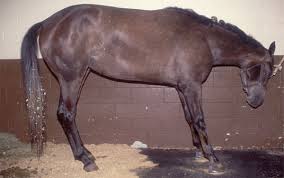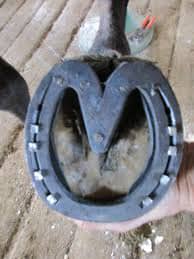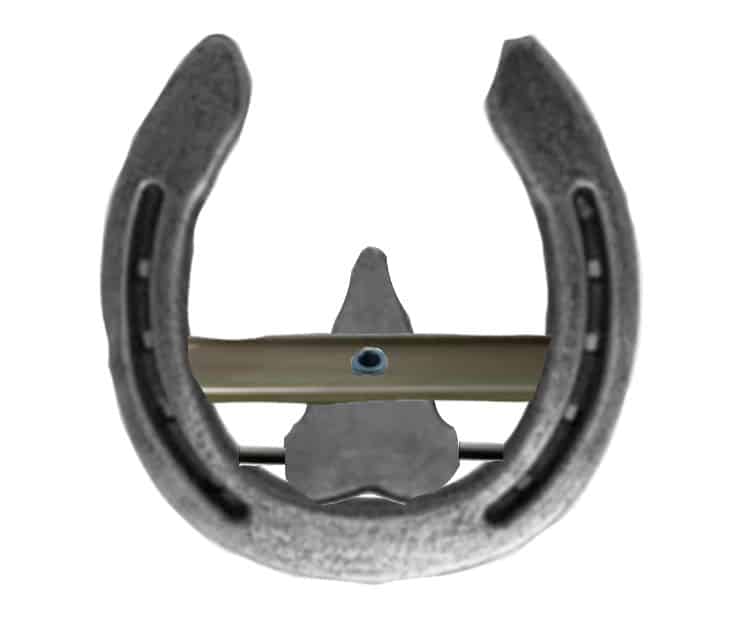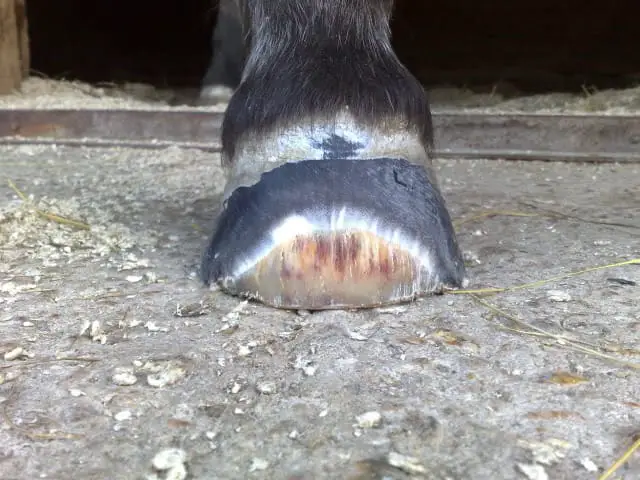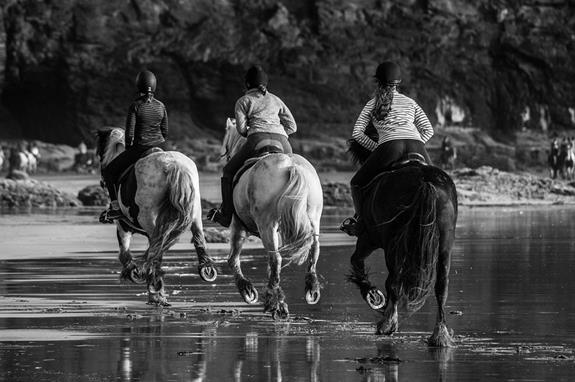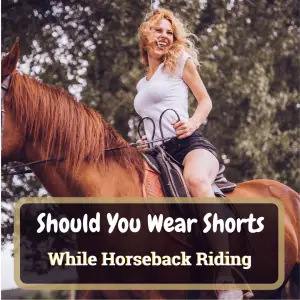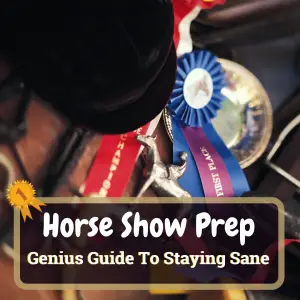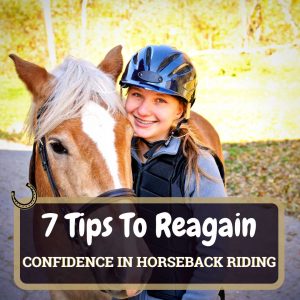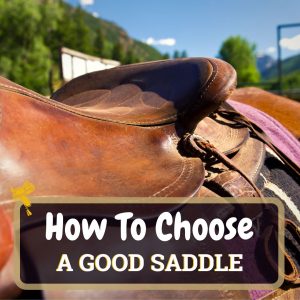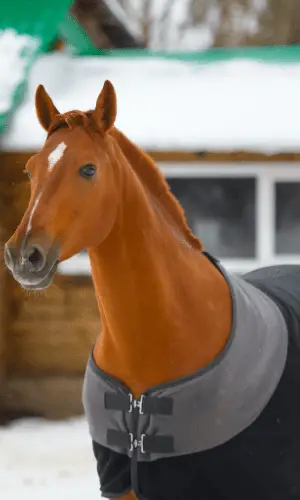HOW DID THIS HAPPEN? WHAT DO I DO NOW?
The answer is SPRING! You let your horse out on that lush green grass.
Horses love lush green grass but alas along with that grass comes trouble in the form of equine metabolic syndrome symptoms. Watching your horse walk into the barn all stiffened up or not moving at all is heartbreaking. I realize “Founder” can be caused by overweight or getting into too much feed but Spring green grass can be a major cause. But you say horses are made to eat grass and they love it. Yes, BUT………..
What Is Laminitis?
What happens is a condition very similar to Type II Diabetes. EMS leaves tissues less sensitive to insulin, which in turn causes the pancreas to produce more of this vital hormone. One dangerous disease that often results from EMS is Laminitis.
It’s the the high sugar content in the grass that signals the body to produce more insulin. The best and only way to avoid this is not putting your horse out on grass at all when it is growing fast.
Some say not at all until grass matures up. If there is a dry spell and then it starts raining again and the grass starts growing fast treat this the same as that first spring grass.
When a horse starts to show signs of Laminitis until this point in time there has not been any positive way to stop the progression. In the simplest terms, Laminitis is the inflammation of the laminae within the horse’s hoof. Each hoof includes 550 to 600 primary laminae, each with 150 to 200 secondary laminae.
These tissues offer shock absorption during locomotion, holding the coffin bone in place and supporting the horse’s entire body weight against gravity during movement. When the laminae become inflamed, they fail to support the coffin bone.
The horse’s continued weight-bearing and movement can cause the coffin bone to rotate within the hoof or to sink toward the ground. The former occurs when laminae near the toe fail; the latter happens when the laminae throughout the hoof break down, a case commonly referred to as a “sinker.” Both can result in the coffin bone protruding through the sole.
Treating Laminitis
Regardless of whether the coffin bone remains in the hoof capsule or penetrates the sole, laminitis causes a painful, debilitating, and potentially deadly failure of basic hoof function. It is an absolute nightmare for both horse and owner.
Many years ago a man by the name of Bernie Chapman made the heart bar shoe very popular although I was taught to make and use one 20 years before that. A heart bar shoe places pressure on the frog area with a V shaped metal piece about the size of the frog.
There are remedies that have been used like putting the horse’s feet into cold water or removing blood with a syringe out of the vein and injecting into the muscle. The goal was to get blood flow down to the horse’s feet. Results are not conclusive however.
Leather is added between the metal piece and frog. When the shoe is nailed on it will put pressure on the coffin bone via the frog to help stabilize the coffin bone.
The Adjustable Heartbar Shoe
The problem I had with the heart bar shoe is getting enough pressure on the coffin bone to make it just right for the comfort of the horse because too much pressure would make the pain worse. Too little pressure wouldn’t do any good.
I made an adjustable heart bar shoe that had the heart bar hinged and then welded a bar across the shoe a third of the way down from the point of the heart bar. Once leather was added to the heart bar and the shoe was set in place the set screw I put in the welded bar could be adjusted to put pressure on the heart bar.
I adjusted the V shape piece heart bar by tightening the set screw and putting just enough pressure on the frog to relieve the coffin bone which is trying to come through the bottom of the sole.
I could tell by the way the horse would hold his leg when I held it up that when I would turn the set screw putting more pressure on the coffin bone via the frog the horse would pull his leg as the pain increased. When I backed off on the set screw until the leg relaxed then I knew it was just right.
As the hoof grew pressure could be kept constant by adjusting the set screw. By keeping the pressure on the coffin bone it allows the hoof to grow properly instead of curling up. With just the heart bar shoe this could not be done.
In later years I seldom used the heart bar. I would cut and rasp the front of the hoof as far back as possible without drawing blood and then put a regular shoe on backwards. This would let the hoof break over much easier taking pressure off the coffin bone. I would always use leather Treadpads whenever possible to protect the bottom of the foot since the sole was very thin and extremely tender.
Treating Horse With Laminitis
I received a call from a farmer whose daughter’s horse had foundered. The coffin bone on this horse was through the soul on all four feet and fluid was coming out the bottom of the hoofs. The veterinarian had been there and wrapped all 4 feet but the horse could not stand and was in extreme pain.
My first thought was “NO WAY”. I did however manage while the horse was laying down to get 1 foot trimmed and a pad and shoe put on backwards. Not an easy job for me or comfortable for the horse.
The next day the farmer called and said the horse was up and standing on the shoed foot. I went back then and got the other front shoe on. I decided not to do anything with the hind feet at the time. The next day I went back and the horse was standing on both feet and moving a little.
We discussed keeping the horse only on dirt and fenced in with no grass anywhere in site. The road back was a long one. The first 6 months were hard on the horse with the retrimming and shoes but gradually he started getting better. After a year the daughter wanted to try riding him a little and by a year and a half they were flying down the trail.
I saw the veterinarian one day and he said he wanted to euthanize that horse the day he saw him. Was so good to see both horse and girl happy and running around again. It’s amazing how one horse with Laminitis that bad could return to health when others you don’t think are that bad can’t seem to get better.
New Treatments Options
Infrared and vibration therapy are relatively new to the Equine industry. There are indications they can help with a number of equine problem including Laminitis.
Vibration Therapy
EQUIVIBE states it is the first equine therapy plate in the United States that aids in the performance, rehabilitation and the prevention of injuries. “EquiVibe Therapy works well for both young horses and horses in need of rehab. The vibration is proven to increase bone density and circulation while at the same time reducing muscle soreness and inflammation.
For young horses, the EquiVibe helps with bone density by stimulating the periosteum to lay down more bone. The vibration therapy also promotes faster hoof growth which can be helpful in the management of chronic Laminitis, under-run heels, or thin soles.”
Infrared Therapy
Infrared is another form of therapy that may hold some promise for helping with Laminitis. Photonic Health is a site that describes how infrared treatments can prove beneficial in the treatment of Laminitis
The Choice Is Yours
Over the years I have had success in treating other horses with Laminitis using both methods I described above. The best hope for horses with chronic Laminitis is to make them comfortable by keeping the length of the toe as short as possible and rasped off. This debilitating problem and the number two killer of horses that we have struggled with for years continues to baffle us as we look for ways to cope and cure.



